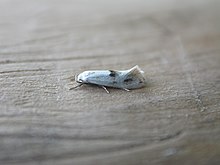
Elachista atricomella is a moth of the family Elachistidae that is found in Europe.
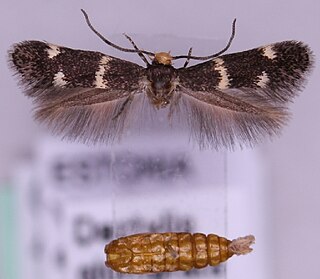
Elachista luticomella is a moth of the family Elachistidae. It is found in most of Europe.

Elachista gleichenella is a moth of the family Elachistidae found in most of Europe.

Elachista albidella is a moth of the family Elachistidae, described by William Nylander in 1848. Its wingspan ranges from 9–10 millimetres (0.35–0.39 in).The head is white. Forewings are white, costa and sometimes dorsum suffused with fuscous; plical stigma large, elongate, black; an angulated fuscous fascia beyond middle, angle acutely produced towards apex; small fuscous costal and dorsal spots near apex. Hindwings are rather dark grey.The larva is greenish-grey, more yellowish anteriorly; head dark brown.

Elachista alpinella is a moth of the family Elachistidae found in Europe and North America.

Elachista apicipunctella is a moth of the family Elachistidae found in Europe. It is found in all of Europe, east into northern Russia.
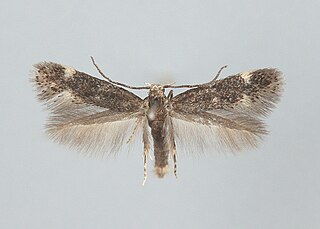
Elachista humilis is a moth of the family Elachistidae found in most of Europe.
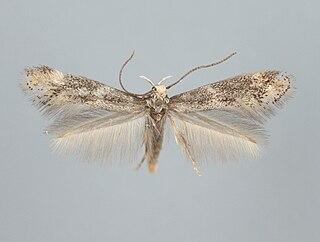
Elachista canapennella is a moth of the family Elachistidae found in Europe.

Elachista freyerella is a moth of the family Elachistidae that is found in all of Europe, except the Balkan Peninsula. It is also found in North America.

Elachista albifrontella is a moth of the family Elachistidae found in Europe.

Elachista utonella is a moth of the family Elachistidae found in Asia and Europe.

Elachista trapeziella is a moth of the family Elachistidae found in Europe.

Elachista subnigrella is a moth of the family Elachistidae found in Europe.

Elachista scirpi is a moth of the family Elachistidae found in Europe.

Elachista poae is a moth of the family Elachistidae found in Europe.

Elachista obliquella is a moth of the family Elachistidae found in Europe.
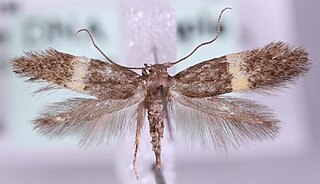
Elachista gangabella is a moth of the family Elachistidae. It is found in all of Europe, except the Iberian Peninsula.

Elachista cinereopunctella is a moth of the family Elachistidae found in Europe.
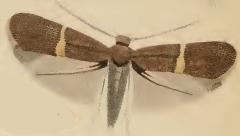
Elachista bisulcella is a moth of the family Elachistidae that is found in Europe.

Elachista biatomella is a moth of the family Elachistidae found in Europe.
